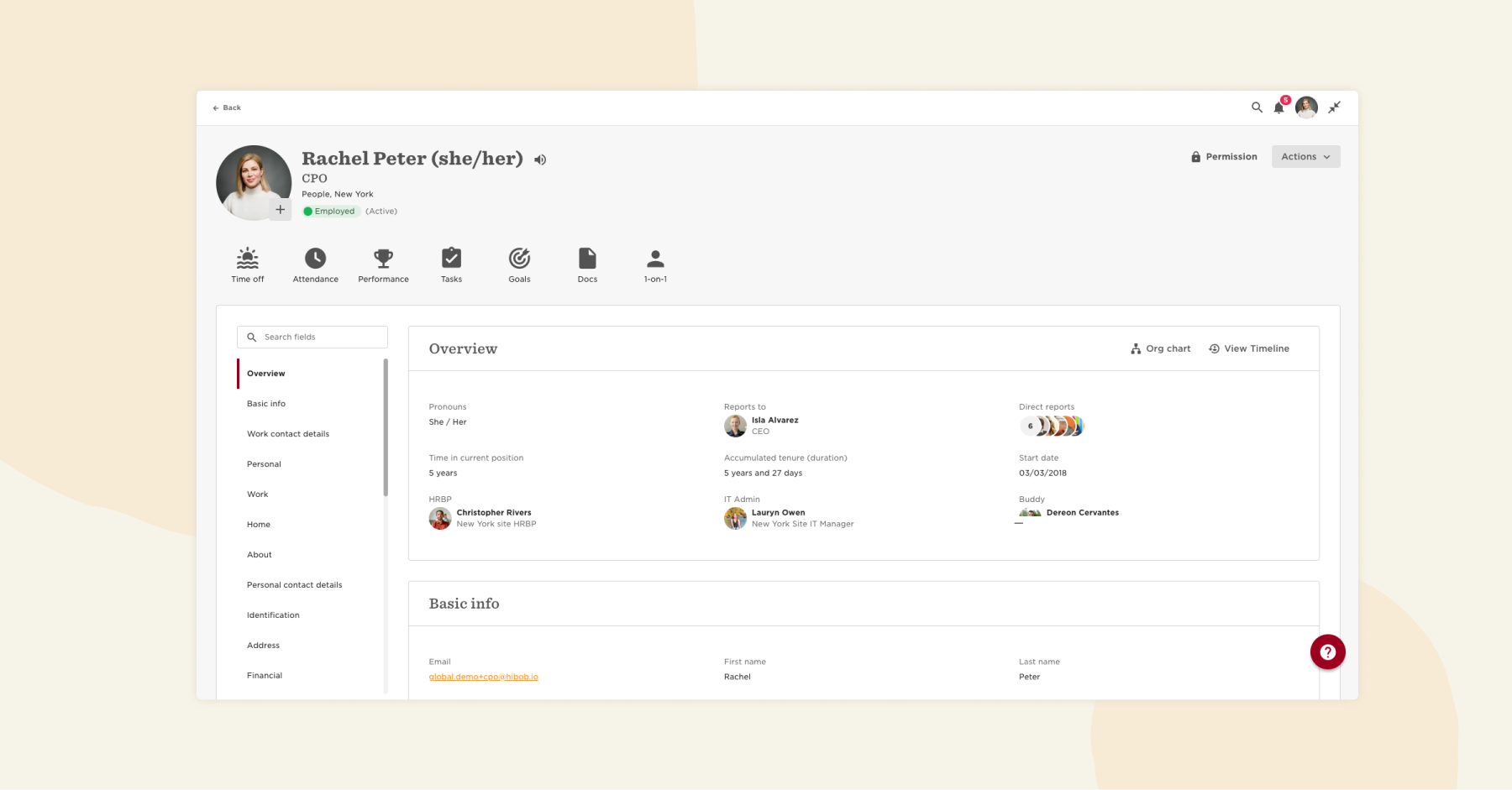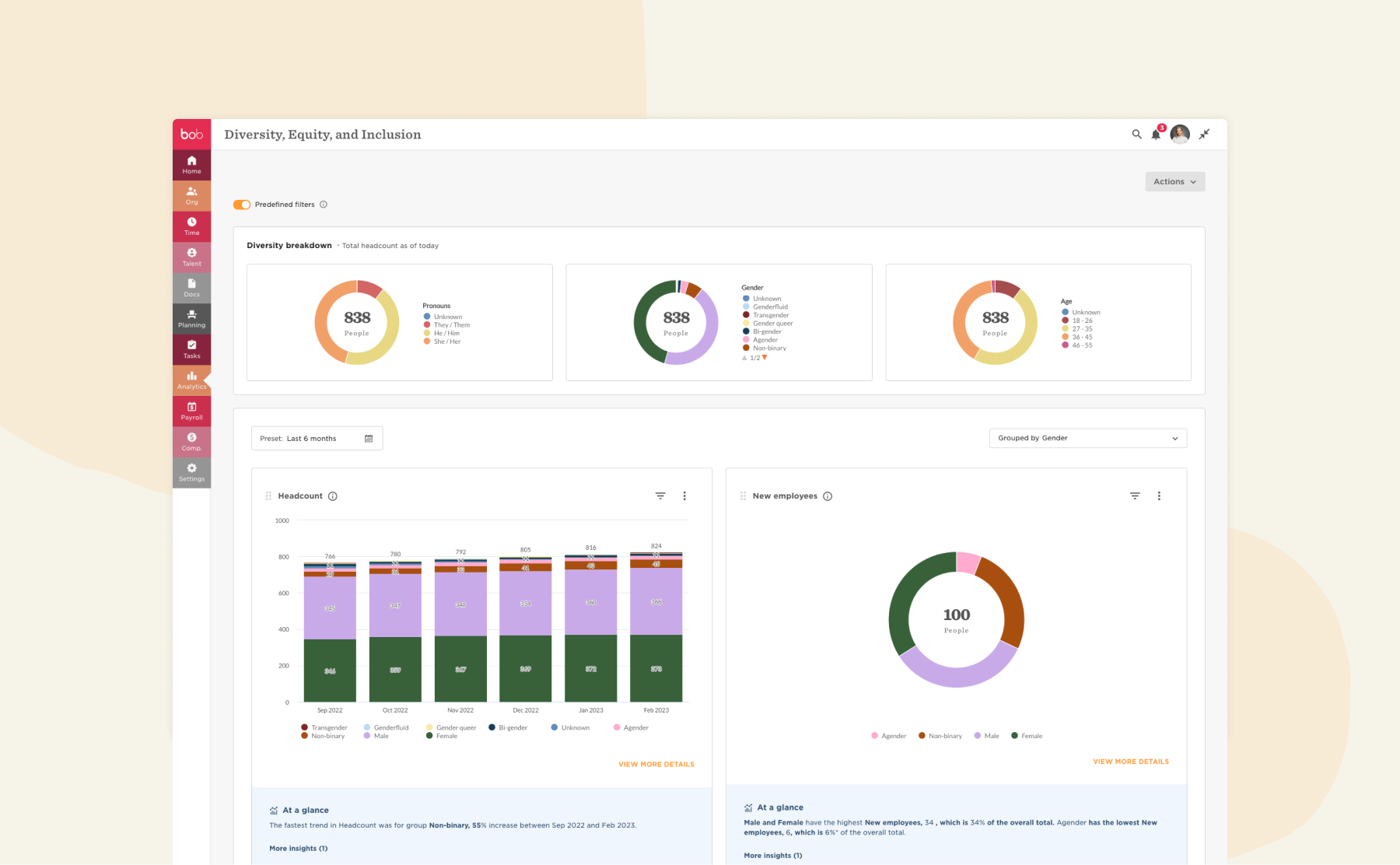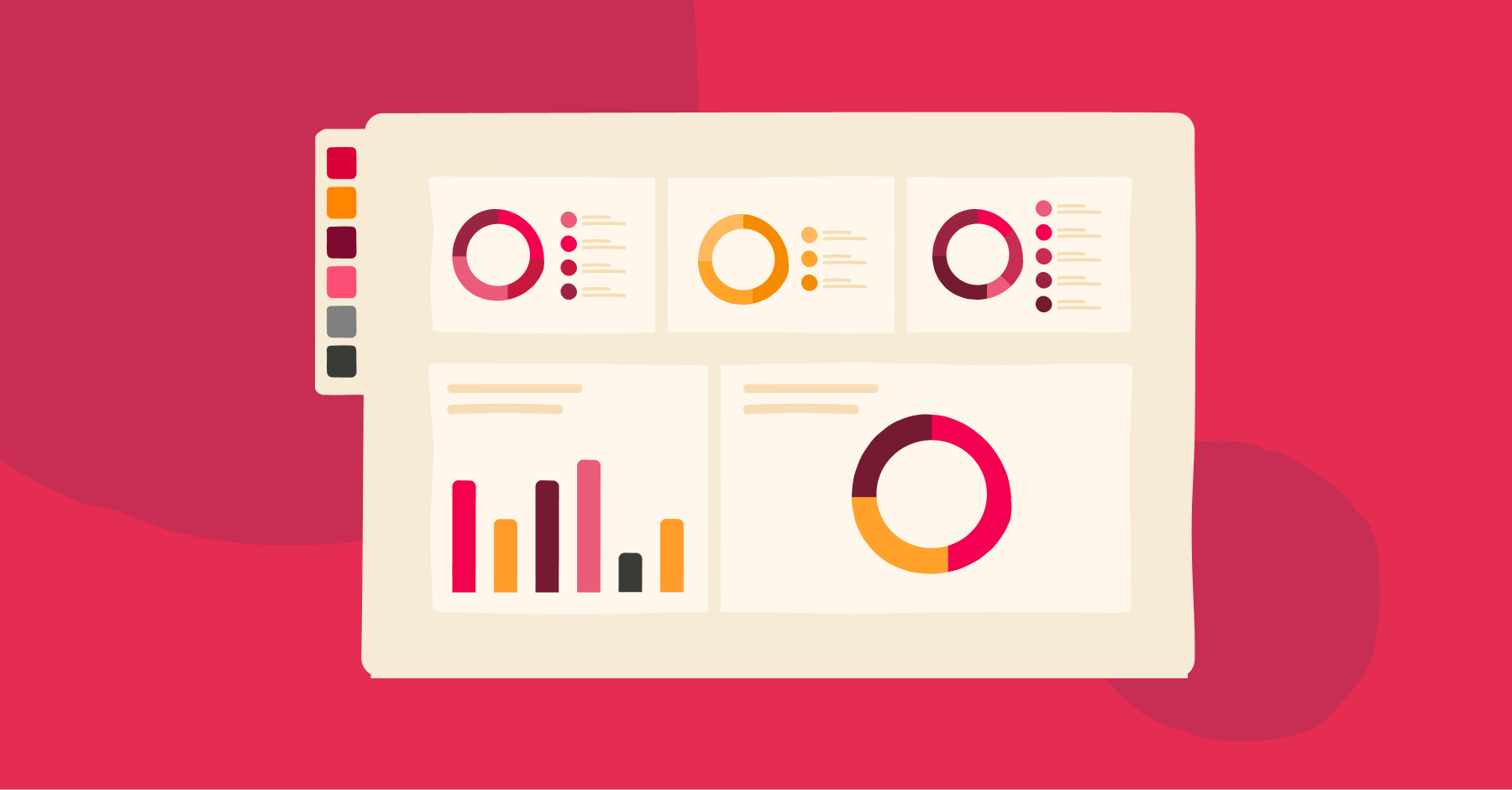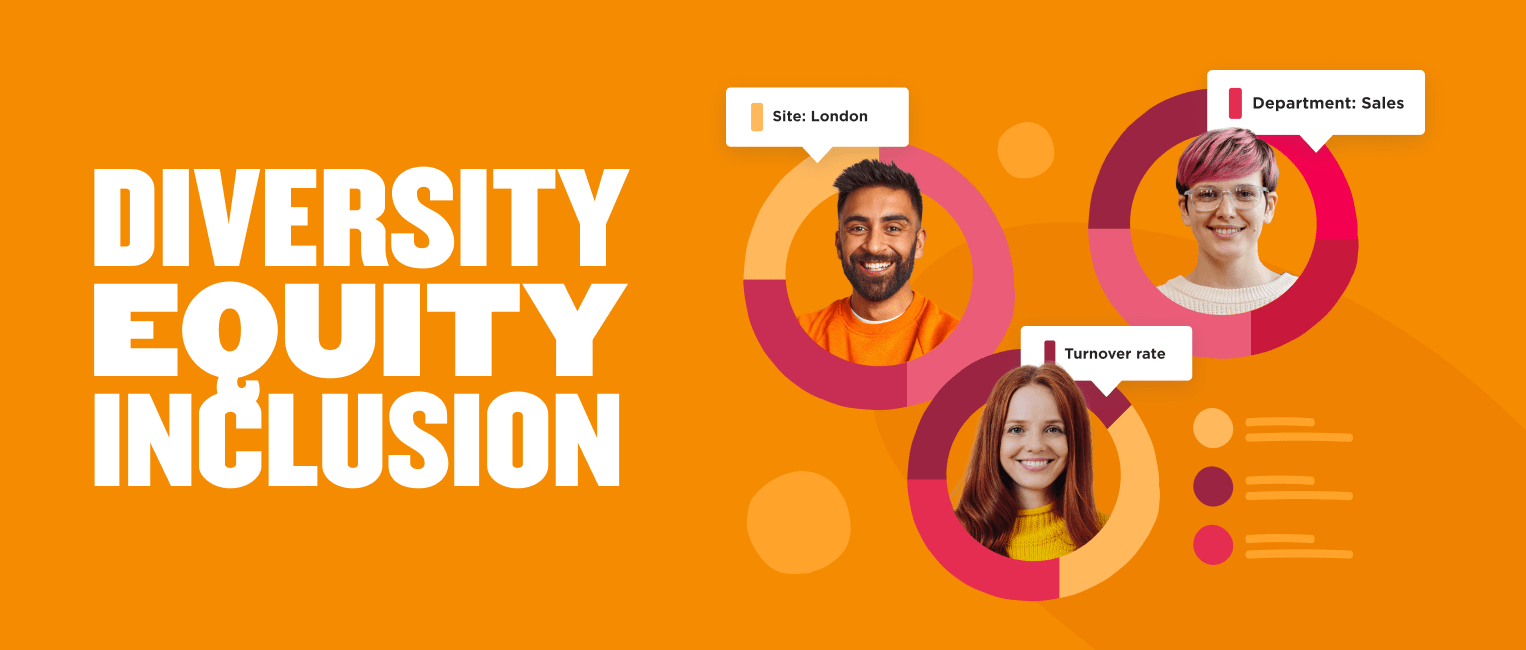Everyone’s talking about diversity, equity, and inclusion (DE&I) in the workplace. Over the past few years, there’s been a push toward diversity hiring, helping to reduce conscious and unconscious bias during recruitment processes and create more diverse workplaces. But DE&I initiatives don’t stop at hiring. They must be top of mind and continuously monitored, ensuring that you treat all your people in a fair and unbiased way and don’t discriminate according to age, gender, ethnicity, disability, or any other reason.
Prioritizing DE&I positively impacts your company culture and may be the key to retaining employees. You need to show your people that you are treating them equally when it comes to raises and upward mobility, are mindful of the number of men and women in senior positions, are not discriminating against people over a certain age or according to ethnicity, and are committed to closing the gender pay gap. Although we’ve seen great strides to improve DE&I in the workplace, there’s still a long way to go. Recent stats from 2022 show women making up just 7.4 percent of Fortune 500 CEOs, men twice more likely to get hired than women, and the gender pay gap in the US standing at 17 percent, with women earning $80 for every $100 made by men.
While we can’t fix the inequalities on a national or global scale alone, we can do our bit to ensure that our workplaces put DE&I first. Read on to learn more about using Bob’s people data to track your DE&I progress and create a diverse and equitable workplace that your people appreciate.
Collect people data in a central platform
To track your DE&I efforts, you need readily available data about your people, and Bob’s employee profile is a great way to get started. Ask your new and existing employees to fill out their personal data, including their pronouns, marital status, date of birth, nationality, and contact details. In countries where it is legal to do so, you can also add a field on ethnicity or racial identity with an option for free text or a drop-down menu. As ethnicity categories differ from country to country, you can customize this field per site.

Track different metrics using Bob’s dashboards
Bob’s dashboards are included in Bob’s basic Core HR package and provide HR leaders and other relevant stakeholders with the tools to track important metrics about their people. The dashboards are easy to use and cover a wide range of focus areas which can be sliced and diced to gain deeper insights into different groups, such as by a specific site, department, time frame, tenure, or DE&I filters such as age, ethnicity, gender, and more.
Bob’s dashboards give decision-makers clear insights into their people and the health of their organization and cover the following KPIs: Growth, retention, finance, career development, absenteeism, and the new Diversity, Equity, and Inclusion dashboard.
Measure DE&I trends using Bob’s DE&I dashboard
Bob’s new DE&I dashboard focuses wholly on DE&I, providing insights relating to gender, age, and ethnicity and any custom fields you’ve set up in Bob, such as pronouns, gender identity, nationality, veteran status, and more. Now you can view at a glance—without needing to filter the data— a dedicated dashboard for tracking key diversity, equity, and inclusion metrics.
Use the dashboard to view people data, such as average salary, turnover, attrition rate, and promotion rates, and gain DE&I-related insights. For each metric, simply choose how you want to group the data by selecting from the dropdown menu to see how your company fares and track your progress over time.

Recommended For Further Reading
Reporting and compliance made simple
Bob’s dashboards provide data for internal reporting and fulfilling specific KPIs that a company sets for itself to maintain a diverse, equitable, and inclusive workforce with equal opportunities for all. You can also use Bob’s dashboards to collect data for reporting to your Board, investors, shareholders, or government agencies.
Many companies set themselves goals for diversity in hiring, gender diversity, pay equity, and women in leadership roles. For example, The&Partnership uses Bob’s People Analytics to learn more about their people and uses the data to guide their diversity strategy and become more ethical in their recruitment process.
Additionally, publicly traded companies must report to their shareholders and may be subject to racial or gender equity audits. Companies in specific countries, such as Australia and the UK, are required to report to government agencies on gender equality data, such as the gender pay gap, pay equity, and women in leadership roles. Novatti, a publicly-traded Australian company, uses Bob’s analytics to prepare reports for their Board and submit an annual report to the Workplace Gender Equality Agency (WGEA) required by all non-public sector employers in Australia with 100 or more employees.
Make a difference, one step at a time
Despite all the attention given to DE&I in the media and government initiatives worldwide, we’re still far from living in an equitable world. Every HR leader is responsible for advocating for this by ensuring that their people are treated fairly, offered equal opportunities, and closing any pay gaps. Providing a more equitable workplace will also contribute to employee satisfaction and help increase retention. Bob’s People Analytics and the new DE&I dashboard provide the data to see what is happening in your organization, enabling you to track your progress and stay compliant in countries with specific requirements. It may be just a drop in the bucket at this point, but it has the potential to grow and create meaningful change for people worldwide in the years to come.



